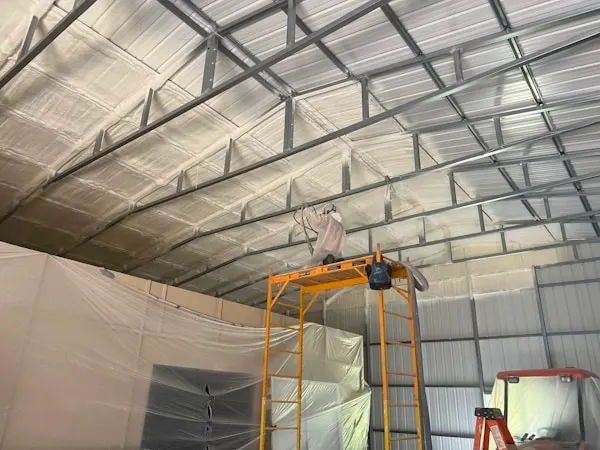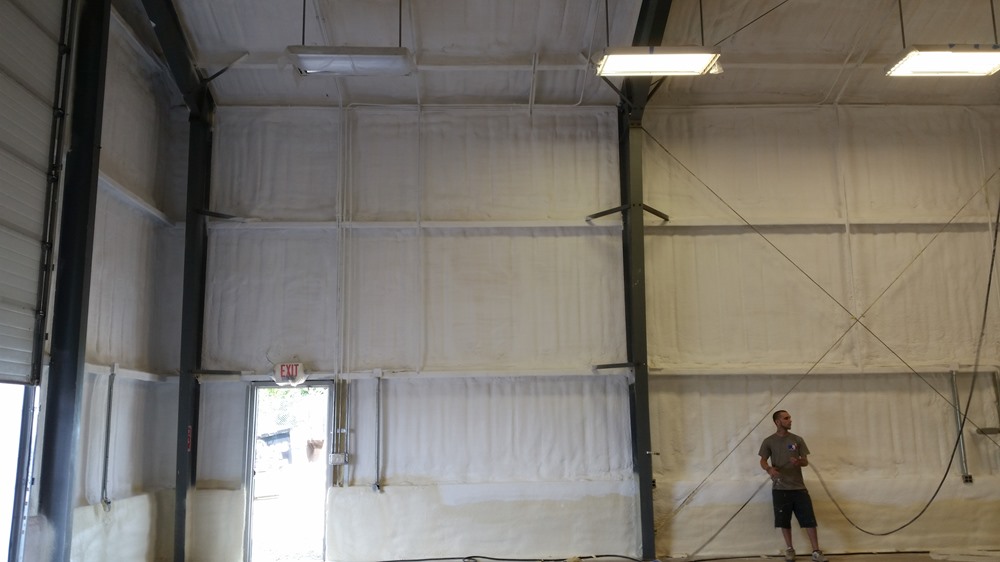
Choosing the right insulation material for your home or building project is crucial for ensuring comfort, energy efficiency, and long-term durability. Two of the most popular types of spray foam insulation are open-cell and closed-cell. Each offers distinct advantages, but selecting the right one depends on several factors, including the specific application, climate, budget, and performance needs. In this article, we will delve into the differences between open-cell and closed-cell spray foam, helping you decide which one is best for your insulation needs.
When it comes to spray foam insulation, the primary difference between open-cell and closed-cell foam lies in their structure, performance characteristics, and cost. Open-cell foam features cells that are not fully enclosed, whereas closed-cell foam has fully enclosed cells. These structural differences result in varying performance metrics, such as R-value (insulation effectiveness), moisture resistance, durability, and soundproofing. By understanding these differences, you can make an informed decision about which type of insulation will best suit your needs.
Open-Cell Spray Foam vs. Closed-Cell Spray Foam
Open-cell and closed-cell foam both offer effective insulation, but each is better suited for particular applications.
- Open-Cell Spray Foam: Open-cell foam is lightweight, flexible, and easier to apply in tight spaces. Its primary advantage is its excellent ability to seal air leaks, making it ideal for interior applications, such as attic insulation, interior walls, and floors.
- Closed-Cell Spray Foam: Closed-cell foam, on the other hand, is denser, more rigid, and offers a higher R-value per inch. It provides superior moisture resistance, which makes it the best option for exterior walls, basements, and areas exposed to harsh weather.
In this article, we will explore the pros and cons of both types of spray foam and help you understand which one is right for your insulation needs.
Types of Spray Foam Insulation
Open-Cell Spray Foam
Open-cell spray foam is a lightweight, flexible material that is made up of foam cells that are not completely closed. The air pockets inside the foam expand during application, creating a porous structure. This structure helps to provide effective soundproofing and air sealing, but it does have lower moisture resistance compared to closed-cell foam.
Key Features:
Lower density
Expands during application
Good for soundproofing
Ideal for interior spaces
Open-cell foam is often used in areas like attics and interior walls where air sealing and noise reduction are important. It is generally more affordable than closed-cell foam, making it a cost-effective option for insulating larger spaces.
Closed-Cell Spray Foam
Closed-cell spray foam has a denser, more rigid structure because the cells are fully enclosed. This foam type is highly resistant to moisture and provides superior thermal insulation due to its higher R-value per inch. Closed-cell foam is ideal for areas exposed to high humidity or extreme weather, such as exterior walls, basements, and crawl spaces.
Key Features:

Higher density
Stronger and more rigid
Provides superior moisture resistance
Ideal for exterior spaces and areas with high humidity
Closed-cell spray foam is more expensive than open-cell foam, but it offers higher performance in terms of insulation and moisture protection. It is the best choice for extreme conditions or areas that require additional structural support.
Comparison Between Open-Cell and Closed-Cell Foam
To help you make an informed decision, here is a detailed comparison of open-cell and closed-cell spray foam insulation based on key performance factors:
Feature
Open-Cell Spray Foam
Closed-Cell Spray Foam
Density
Lower density, more flexible
Higher density, rigid
R-Value
~3.6 to 4.0 per inch
~6.0 to 7.0 per inch
Moisture Resistance
Less resistant to moisture
Highly resistant to moisture
Soundproofing
Better at noise reduction
Less effective for soundproofing
Air Barrier
Effective at air sealing
Excellent at air sealing
Durability
Less durable
Highly durable
Cost
Generally lower
Generally higher
Application Areas
Interior walls, attics
Basements, exterior walls, roofs
Weight
Lighter
Heavier
Things to Consider Before Making a Decision
1. Climate and Moisture Exposure
One of the most critical factors to consider when deciding between open-cell and closed-cell foam is the climate and moisture levels in your area. If you live in a region with high humidity, heavy rainfall, or extreme temperatures, closed-cell foam is the better option. Its moisture resistance prevents water infiltration, which could lead to mold growth and other issues in your home. Closed-cell foam also provides a higher R-value, making it more efficient at keeping your home warm in the winter and cool in the summer.
Open-cell foam, while still effective at insulating, is not as resistant to moisture. If you're insulating areas like attics or interior walls that are not exposed to high humidity, open-cell foam may suffice. However, it’s not ideal for spaces prone to moisture, such as basements or exterior walls.
2. Budget Considerations
Closed-cell foam is generally more expensive than open-cell foam due to its higher performance characteristics. If you are working with a limited budget and the insulation is for interior, non-moisture-prone spaces, open-cell foam could be the better choice. However, if you need superior insulation and moisture protection, investing in closed-cell foam may provide better long-term value.
3. Space Constraints
Open-cell foam expands significantly during application, which allows it to fill tight spaces and provide good air sealing. This makes it ideal for areas like attics, where space is limited, and you want to avoid air leaks. Closed-cell foam, while denser, is more rigid and may require careful application in smaller or more confined areas.
4. Durability and Long-Term Performance
Closed-cell foam is more durable and can provide better long-term performance, especially in areas subject to high wear and tear. If you are insulating exterior walls, roofs, or areas prone to water exposure, closed-cell foam’s ability to resist moisture and its higher R-value make it a more reliable option for long-term durability.
Technical Specifications of Spray Foam Insulation

Specification
Open-Cell Spray Foam
Closed-Cell Spray Foam
Density
0.5 to 0.8 lbs/ft³
2.0 to 2.5 lbs/ft³
R-Value per Inch
3.6 to 4.0
6.0 to 7.0
Water Vapor Permeability
High (allows moisture)
Very low (blocks moisture)
Compression Strength
15 to 30 psi
40 to 60 psi
Expansion Ratio
100:1
30:1
Closed-Cell Content
10% to 20%
95% to 98%
Conclusion
Choosing the right spray foam insulation depends on a variety of factors, including your climate, budget, space constraints, and durability needs. Open-cell foam is a great option for interior spaces, soundproofing, and lower-cost projects, while closed-cell foam excels in moisture resistance, high R-value, and long-term durability. By carefully evaluating your project’s requirements, you can select the insulation that offers the best combination of performance and cost-efficiency.
FAQ
1. Which foam insulation has a higher R-value?
Closed-cell foam has a higher R-value per inch, typically between 6.0 and 7.0, while open-cell foam typically has an R-value between 3.6 and 4.0 per inch.
2. Can open-cell foam be used in wet areas?
Open-cell foam is not recommended for wet areas, such as basements or bathrooms, due to its lower moisture resistance. Closed-cell foam is better suited for these environments.
3. Which foam is better for soundproofing?
Open-cell foam is more effective at reducing sound transmission, making it the better choice for soundproofing applications in walls, ceilings, and floors.
4. Is closed-cell foam worth the extra cost?
Closed-cell foam offers superior insulation, moisture resistance, and durability. If you are insulating an exterior space or an area exposed to harsh conditions, the extra cost of closed-cell foam is justified by its long-term performance.
5. Can I install spray foam insulation myself?
While it is possible to install both open-cell and closed-cell foam yourself, it is typically recommended to hire a professional to ensure proper application and avoid issues with air sealing and foam expansion.




Comments